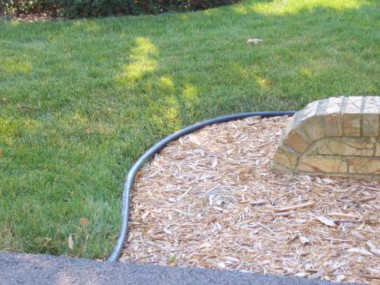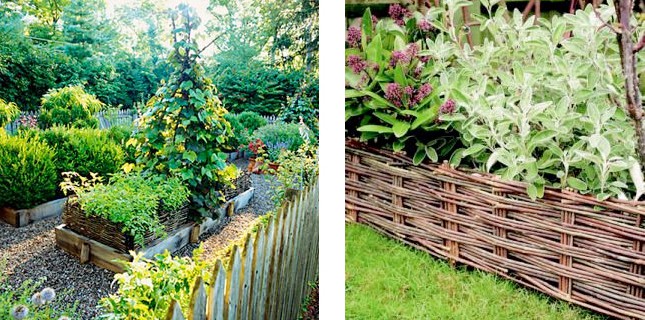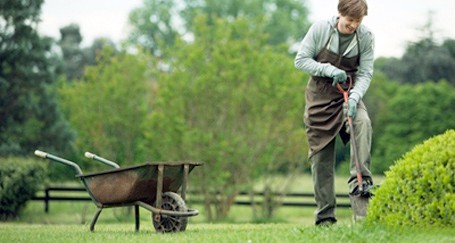Our Landscaping Faux pas series continues with the perils of plastic edging and alternative materials you can use to edge your way to a beautiful garden.
An all-too-familiar sight in home landscapes: plastic edging.
I’m not a big fan of plastic garden edging. For one thing, I find it hard to feel good about using anything plastic in a landscape filled with materials that come from nature. Here are some more reasons: 1) off-gassing isn’t good for you, the people who make the material, or the environment; 2) the shiny texture looks strange in the midst of natural materials; 3) it’s easy to dent, break, or destroy plastic edging with a mower or weed whacker; 4) since it’s so light, the material pulls out of the ground easily; 5) it’s not great for holding soil in or keeping grass roots from getting underneath it. You can feel a little better about edging made from recycled plastic, but if the purpose is to separate flowerbeds from lawn, then plastic edging may not be your best choice of material.
Creating the Beautiful Line
I do love a clean edge to my garden beds. A more expensive, but more permanent option is to lay cobbles, bricks, or clay or slate roof tiles on end to define the perimeter of a perennial border. Each of these natural materials looks tailored and neat against a swath of mown lawn. In northern climes like ours, however, freeze-thaw cycles may heave the lighter bricks or roof tiles out of the ground, requiring you to make adjustments each spring to keep the lines of your garden beautiful.
Wooden boards and willow used to hold soil and create a clean edge in Oscar de la Renta’s garden.
Also satisfying are wood boards laid on end to create a clean edge or to retain the soil of a raised bed. By using a decay-resistant wood like cedar or black locust, you can hold in improved soils, keep weeding to a minimum, and provide a handsome background pattern for the vegetables or flowers that you grown there.
A creative use of metal edging. Photo from Outside the Not So Big House, p. 120.
I also love a steel-edged against the lawn, so that it becomes a grass panel in a handsome geometric shape. When you surround a space with a border or edging, you make what’s inside look cared for and appreciated and give a sense of calm and clarity to a landscape. Like a wood parquet floor edged in a band of a different colored wood, a clear edge calls attention to what’s inside the border, helping us understand its relationship to the total design.
Edging the old-fashioned way.
Edge Benefits (from Home Outside: page 221)
When you keep the edges of your planting beds sharp and neat, it gives your whole landscape a lift by clearly separating the garden area from the lawn. You can use steel edging, bricks on edge, or cobblestones, but the least expensive solution is to cut a simple spaded edge. First, define the bed line using a flat-edged shovel or a spade, making a 3 in. vertical cut. Then make another cut at a 45-degree angle toward the planting bed, removing all extra soil. It’s an easy way to keep your borders looking trim—and much more natural than using plastic edging.










I agree with using edging material that comes from the earth- it harmoniously completes the landscape picture. I would guess that edging the old fashioned way could almost be a faster chore (as long as you keep it maintained), than digging the trench to install the plastic.